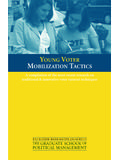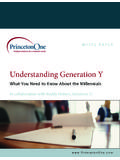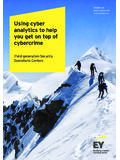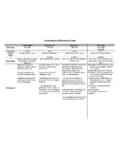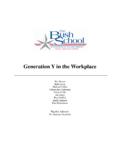Transcription of Understanding a diverse generation - CIRCLE
1 Understanding a diverse generation Youth Civic Engagement in the United States November 2011. Kei Kawashima-Ginsberg, CIRCLE Lead Researcher and CIRCLE staff 1. CIRCLE (The Center for Information and Research on Civic Learning and Engagement) conducts research on the civic and political engagement of young Americans. CIRCLE is a nonpartisan, independent, academic research center and was founded in 2001 with a generous gift from the Pew Charitable Trusts. CIRCLE is part of the Jonathan M. Tisch College of Citizenship and Public Service at Tufts University: CIRCLE .
2 Jonathan M. Tisch College of Citizenship and Public Service Lincoln Filene Hall Tufts University Medford, MA 02155. Stay connected Find out about new research by signing up for our monthly e-update: Follow us Facebook Twitter @CivicYouth Understanding a diverse generation Youth Civic Engagement in the United States Table of Contents Method 10. Section I. Six Clusters of Young Americans - 2008 12. Political Specialists (2008) 12. Broadly Engaged (2008) 14. Only Voted (2008) 14. Civically Alienated (2008) 15. Engaged Non-Voters (2008) 15.
3 Politically Marginalized (2008) 16. Summary of 2008 Clusters 17. Six Clusters of Young Americans - 2010 18. Civically Alienated (2010) 19. Broadly Engaged (2010) 20. Political Specialists (2010) 20. Under-Mobilized (2010) 21. Talkers (2010) 22. Donors (2010) 22. Section II. How Young People Perform on Specific Civic Indicators 23. Volunteering 23. Community Involvement and Charitable Donations 25. Voting: Presidential Elections 26. Voting: Midterm Elections 27. Voter Registration 28. Political Voice Activities 29. Implications 30.
4 Appendix 32. Technical Notes 37. Endnotes 38. Understanding a diverse generation Youth Civic Engagement in the United States figures + tables Figure 1: Youth Engagement Clusters, 2008 12. Table 1: Political Engagement and News Consumption Indicators 13. Asked in the CPS in 2008 Only Figure 2: Youth Engagement Clusters, 2010 18. Figure 3: National Volunteering Rate by Age, 2002-2010 23. Figure 4: Volunteering Rates among Young People by Race/Ethnicity (2010) 24. Figure 5: Volunteering Rates by Educational Attainment, Ages 18-to-29 24.
5 Figure 6: Community Engagement and Charitable Donation by Age 25. Figure 7: Civic Activities by Race/Ethnicity, Age 18 to 29 26. Figure 8: Voter Turnout by Age in Presidential Elections, 1972-2008 26. Figure 9: Voter Turnout by Age in Midterm Elections, 1974-2010 28. Figure 10: Voter Registration in Presidential Elections 18-29, 1972-2008 28. Figure 11: Voter Registration 18-29 in Midterm Elections, 1974-2010 29. Table 2: Political Voice Activities, by Age 29. Appendix Table 1: Civic Engagement Indicators Included in the 32. Model & Data Source Appendix Table 2: 2008 Clusters Engagement by Indicators 33.
6 Appendix Table 3: Cluster Break-Down By Demographic Groups (2008) 34. Appendix Table 4: 2010 Clusters Engagement by Indicators 35. Appendix Table 5: Cluster Break-Down By Demographic Groups (2010) 36. Understanding a diverse generation Youth Civic Engagement in the United States Executive Summary Y. Our analysis shows that outh civic engagement is critical to our democracy. young people should not Young people benefit personally by participating and be treated as a communities need their voices and their energies to address problems.
7 The future of our democracy depends on uniform group. each new generation developing the skills, values and habits of participation. US Census: Current In this report, CIRCLE provides an overview of young Population Survey Americans' civic engagement: their service activities, membership in groups and associations, discussion of Findings presented in this report issues and political participation. Through its annual Current are based on CIRCLE 's analysis Population Survey (CPS), the US Census now provides data of the Census, Current on these and other forms of civic engagement.
8 Focusing on Population Survey (CPS) data. Volunteering estimates are from ages 18-29, we have analyzed this national survey data and the CPS September Volunteering examined the two most recent election years: 2008 and 2010. Supplement (2002-2010) and voting and registration data Our analysis shows that young people should not be treated come from the CPS November as a uniform group. Often called the Millennial generation , . Voting/Registration Supplement, this cohort is extraordinarily heterogeneous. They are the (1972-2010). All other civic most ethnically and racially diverse generation in American engagement indicators, such as access to information and history.
9 Some attend world-class universities while others connection to others, come attend high schools with dropout rates well above fifty from the 2008, 2009 and percent. Thus it is no surprise that they differ greatly in their 2010 CPS Civic Engagement levels and types of civic engagement. Any generalizations Supplements. We used the most about youth voter turnout or young people's volunteering recent data available. However, rates conceal crucial differences within the cohort that some indicators (news access and some political engagement anyone who hopes to engage young Americans should indicators) were only available understand.
10 Some young people will vote in 2012 and some as pooled estimates from 2008- will not. Instead of speculating about what the youth vote . 2009 data. might be, we need to understand the differences among this diverse group so we can work to reduce the number of disengaged youth. Understanding a diverse generation 5 Youth Civic Engagement in the United States To explore these differences, CIRCLE conducted a cluster analysis of Census civic engagement data from 2008 and 2010. A statistical technique that divides a sample into distinct profiles, our cluster analysis identified groups of youth with different patterns and levels of civic engagement.
